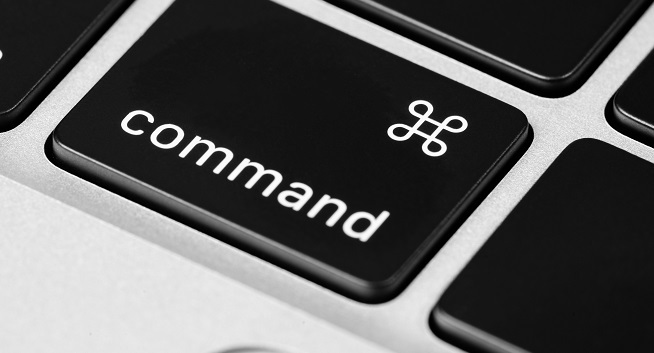
 Data Structure
Data Structure Networking
Networking RDBMS
RDBMS Operating System
Operating System Java
Java MS Excel
MS Excel iOS
iOS HTML
HTML CSS
CSS Android
Android Python
Python C Programming
C Programming C++
C++ C#
C# MongoDB
MongoDB MySQL
MySQL Javascript
Javascript PHP
PHP
- Selected Reading
- UPSC IAS Exams Notes
- Developer's Best Practices
- Questions and Answers
- Effective Resume Writing
- HR Interview Questions
- Computer Glossary
- Who is Who
What is the full form of DOS?
Introduction
Disk Operating System (DOS) is a command-line interface (CLI) operating system, users must enter commands in order to communicate with it. Microsoft's MS-DOS (Microsoft Disk Operating System), which was created and introduced in 1981, is the most well-known DOS-based operating system.

Early personal computers frequently used DOS because of its ease of use, speed, and minimal hardware requirements. But compared to contemporary operating systems, it has drawbacks like restricted multitasking, a lack of graphical user interface (GUI), and restricted memory management.
History of DOS
The origins of DOS may be traced all the way back to the early days of personal computing. Here are some of the significant landmarks:
IBM released the first floppy disk drive in 1971, which helped DOS get off the ground.
For their 8086-based computer, Seattle Computer Products (SCP) developed the 8-bit QDOS (Quick and Dirty Operating System) operating system in 1978. In terms of design, QDOS was comparable to the then-common CP/M operating system.
Microsoft purchased QDOS's rights from SCP in 1980 for $50,000, renaming it MS-DOS (Microsoft Disk Operating System). MS-DOS was first created for IBM's 1981 introduction of the IBM PC, the company's first personal computer.
Windows 1.0, a graphical user interface (GUI) that operated on top of MS-DOS, was launched by Microsoft in 1985.
The new features of MS-DOS 5.0, which was published by Microsoft in 1991, included support for High Memory Area (HMA) and Extended Memory Specification (EMS).
Microsoft introduced MS-DOS 6.0 in 1993, and it came with a disk compression program named DoubleSpace.
The final standalone version of MS-DOS was MS-DOS 6.22, which was published by Microsoft in 1994. Following this, MS-DOS was incorporated into Windows and kept in use for software backward compatibility.
The final iteration of Windows to contain MS-DOS as a distinct operating system was Windows Me (Millennium Edition), which was made available by Microsoft in 2000.
The command prompt and command-line interface are still utilised in contemporary Windows systems, even though DOS is no longer a stand-alone operating system.
Features of DOS
A number of features of the straightforward and effective DOS operating system helped it become well-known in the early years of personal computing. Here are some of the key features of DOS:
Command-line interface (CLI) Users interact with DOS by typing instructions at a prompt since it is a text-based operating system that employs a command-line interface.
Low hardware requirements For early personal computers with little memory and processing capacity, DOS is a lightweight operating system that needs little hardware.
Compatibility with a wide range of hardware and software Because DOS is made to function with a variety of hardware and software, it is simple to use and has been widely adopted by software developers.
Simple file system The file system used by DOS is straightforward and simple to use. Directories, which are sometimes known as folders, are used to organise files and can also include additional directories and files.
Batch processing DOS offers batch processing, which enables users to create scripts that run a sequence of instructions to automate tedious activities.
Bootable from a floppy disk Floppy disks may be used to boot DOS, making it simple to use on portable computers and other devices.
Support for peripherals It is simple to connect and utilise peripheral devices with a computer running DOS since DOS comes with drivers for a broad variety of peripherals, including printers, mouse, and keyboards.
An important part of the development of personal computing may be attributed to DOS, a straightforward and effective operating system. The command prompt and other text-based interfaces that are still used in contemporary computers are testaments to its legacy, despite the fact that it has been mostly supplanted by more sophisticated operating systems.
Uses and Significance of DOS
In the early days of personal computing, DOS was an important operating system with a variety of uses and significance. Here are some of them:
Backward compatibility Despite the fact that current operating systems have mostly superseded DOS, it is still important since it is still required for older software that was created to operate on DOS.

Legacy hardware Some specialised applications still rely on legacy hardware that runs DOS, such as those used in manufacturing and other industrial settings. The software needed to execute these apps in these situations is frequently only compatible with DOS as an operating system.
Education and experimentation In certain educational contexts and by enthusiasts who want to learn more about the origins of personal computing, DOS is still in use. It offers a straightforward and convenient platform for research and education.
Embedded systems Even though it is less popular now, DOS is still used in some embedded systems, such as point-of-sale terminals and industrial control systems, where its effectiveness and simplicity make it a good option.
Although DOS is no longer the main operating system for personal computers, it still has a lasting legacy and is an important part of computing history.
Conclusion
In the early years of personal computing, DOS was crucial, and it continues to be remembered in computer history. Although more modern operating systems have largely taken its place, it is still used in some specialised applications and for backward compatibility with older software. In its day, DOS was a popular choice because of its ease of use, effectiveness, and compatibility with a variety of hardware and applications. The command prompt and other text-based user interfaces that are still in use in contemporary computers are testaments to its history. Overall, DOS was a significant development in the history of personal computing that paved the way for later, more sophisticated operating systems.
FAQs
Q1. When was DOS first developed?
Ans: The initial version of DOS was created by Seattle Computer Products (SCP) in the late 1970s.
Q2. Who is the rightful owner of DOS?
Ans: As of right now, Microsoft is the owner of the DOS patents after purchasing them from SCP in 1980.
Q3. What is the difference between MS-DOS and PC-DOS?
Ans: The two operating systems, MS-DOS and PC-DOS, are quite similar, however PC-DOS was created especially for the IBM PC and its replicas, whilst MS-DOS was also created for other hardware platforms.

